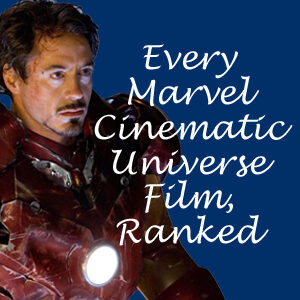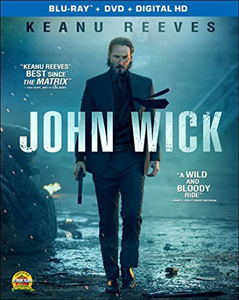Part homage to classic action films, part serious postmodern take, and skillfully dodging the ripoff label, “John Wick” (2014) reinvigorated the genre nine years ago. It features 77 kills by the title character (Keanu Reeves) alone, and although that’s the lowest total of the four films, the kill frequency (one every 1:18) ranks second only to “Chapter 2” (2017).
The style is the substance
But it’s not about the volume of kills – after all, “Hot Shots Part Deux” remains the bloodiest movie ever – it’s about the style in which the bad guys are dispatched. Screenwriter Derek Kolstad envisioned an action series that doesn’t merely feature great stunt work, but foregrounds it.
Chad Stahelski (who has helmed all four films, but nothing else) turns out to be the perfect choice to direct – not because of any directing background, but rather because of his career as a stuntman. “Wick” pioneers gun-fu, wherein Reeves’ character wades through swaths of bad guys, doing a lot of hand-to-hand combat and martial-arts moves but finishing most of them with a bullet.

“John Wick” (2014)
Director: Chad Stahelski
Writer: Derek Kolstad
Stars: Keanu Reeves, Michael Nyqvist, Willem Dafoe
Those moves – particularly shown off in the wonderfully strobe-lit night club sequence, where Wick chases towel-clad Russian villain Iosef (Alfie Allen) – are what is most remembered about “John Wick.” What’s most notable to me on this rewatch, though, is how Kolstad introduces his hero.
A new action hero grows from the old
We’ll eventually learn Wick’s arc is the same as that of any other action icon, with Rambo particularly coming to mind as the war-arena equivalent to Wick’s status in the contract-killing arena. Wick wants to get out of the game, and he even does for a while, but he gets pulled back in. He can’t change who he is. He’s a killing machine more than he’s a man. And so forth.
But Kolstad cleverly unveils Wick like he’s introducing a horror villain. Indeed, before Wick, “Halloween’s” Michael Myers was the film character most often likened to “the Boogeyman” (or “Baba Yaga” in Russian).
Wick is a sympathetic protagonist – but only in a binary comparison to the bad guys. The baddies steal his muscle car and kill his tiny dog while Wick is minding his own business and grieving his late wife. They smoke and speak Russian on top of that. Yet Wick is so scary-good at his job that we absorb some of the villains’ fears.
A hint of world-building
We feel a little bad for their naivete, notably in the case of Perkins (Adrianne Palicki), who is so cocky that she accepts a contract to kill Wick inside the Continental. That’s simply not done, and we eventually find out the manner in which the hotel boss (Ian McShane as Winston) maintains order. The Continental – replete with bars, a doctor and a weapons cache — adds spice and hints at a richer mythology (Kolstad is surely making it up as he goes, but that’s fine).

For the most part, though, “Wick’s” foundation is common action-film stuff. Whether the narrative’s familiarity is a perk is debatable, but it’s definitely not a bug. “Wick” is so well-made in every technical way (also consider the gritty lived-in city, with the night colorfully lit up to suggest the future is coming) that a critic is compelled to say “archetype” more so than “cliché.”
His actions speak louder than words
Just as Stehelski is the perfect choice to direct, Reeves is the ideal choice to play Wick. An actor who can be great in one role and terrible in another, he’s perfect here. Reeves doesn’t have to do much talking, because Wick’s actions speak for themselves. And other characters embellish the characterization with anecdotal statements such as “He killed three men with a f***in’ pencil!” Or even simpler, from the Red Circle’s security room: “He’s here.”
Wordlessly, the actor projects as someone who intellectually knows it’s not a smart move (for the sake of a long lifespan) to seek vengeance on Iosef – since he’s the son of elite crime boss Viggo (Michael Nyqvist). But John can’t help himself.
When Wick does say something, it’s quotable, but it’s not written to be quotable, as was the case in the Stallone/Schwarzenegger heyday of the Eighties and Nineties. Reeves bites off Wick’s lines, all business.
John’s mindset is never outlined in the dialog or a voiceover monolog (one aspect of noir “Wick” doesn’t embrace). And only once does the film give us the unnecessary-but-expected montage of what he’s thinking about — his wife, and the beagle puppy that was her dying gift. Yet through Reeves’ deceptively blank face, we know Wick is killing every henchman in Viggo’s organization because he can’t help himself. He needs revenge like an alcoholic needs a drink.
Whetting our appetite
Sure, there are times when I chuckle with “John Wick” (rather than at it). It’s delicious wish-fulfillment entertainment, so good with its meticulous-yet-fast stunts that it leaps over the “watching someone else play a video game” canyon. It leaves you smiling, but it’s not a joke.
Even though we don’t need John Wick’s backstory (since he’s obviously Kolstad’s homage to action heroes, rather than a richly new creation), we sort of want it. Smartly, though, the sequels are forward- rather than backward-looking.
Another smart element: As we approach 10 full years of the franchise, there have been only four films. Granted, the TV spinoff “The Continental” is planned for later this year, the film spinoff “Ballerina” is planned for 2024, and there are video games and comics.
Still, that’s restrained for this day and age; like how George Lucas approached “Star Wars” in the Eighties. We might have Superhero Fatigue, but we don’t have “John Wick” Fatigue, even if the experience of watching each subsequent film gets increasingly exhausting and bladder-challenging.
By one metric, the first “John Wick” will always be the best: It clocks in at mere 101 minutes. Never again will a “Wick” film be so lean and efficient. All of the “Wicks” are technically great, and arguably quite good in terms of storytelling and world-building. But the original is a healthy and satisfying meal, not glutinous.

